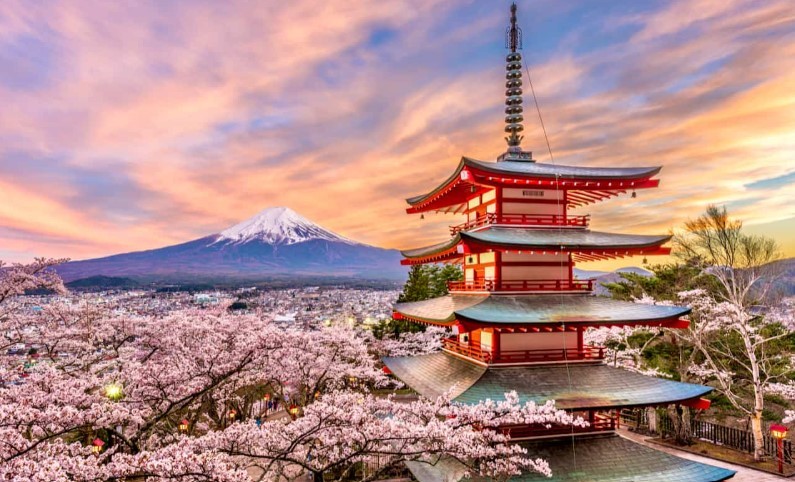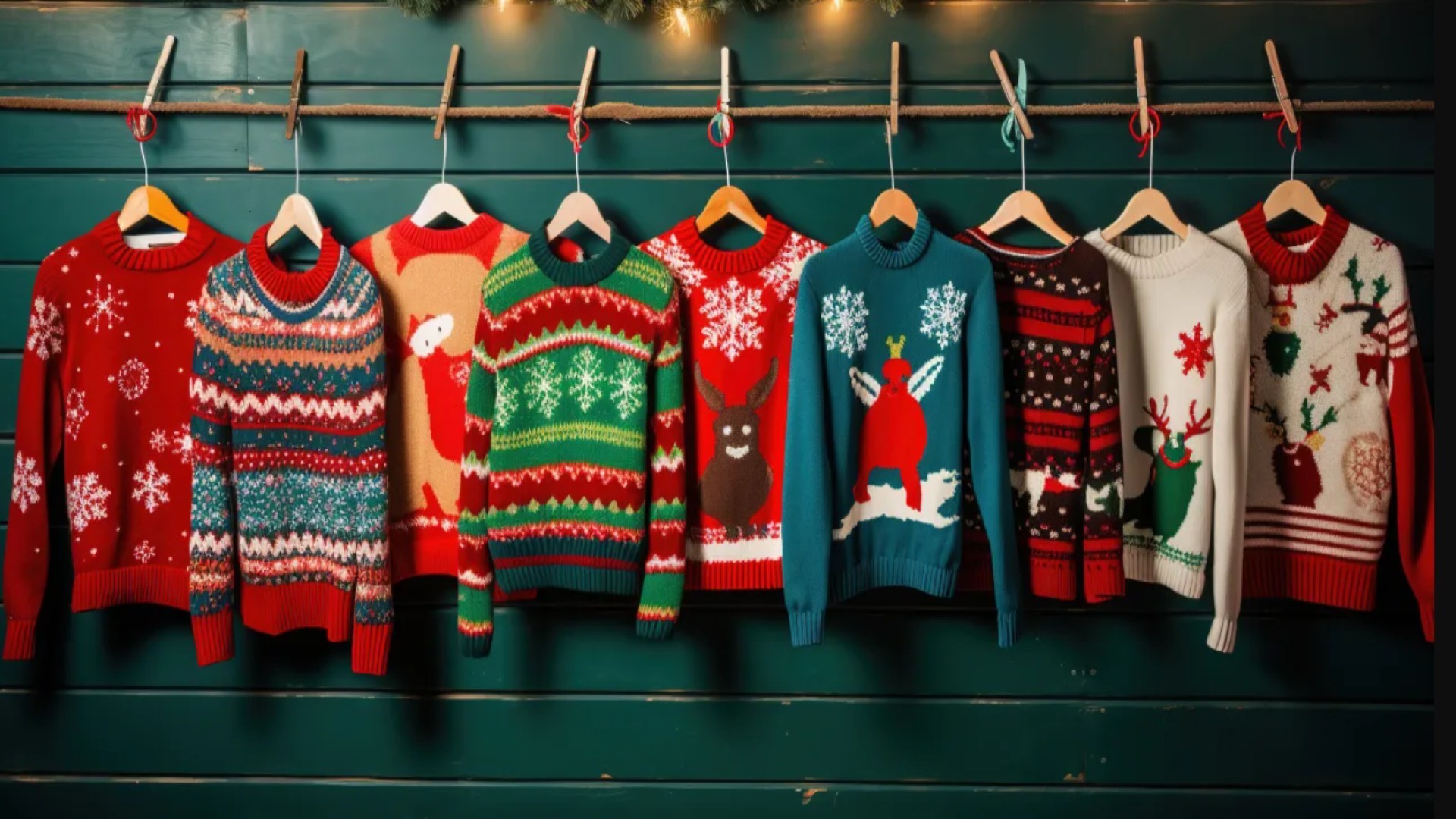Alaska's Amazing Facts - The Biggest State In The US by Land Area
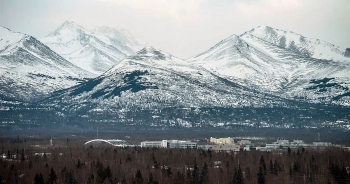 ONLY in ALASKA: Top 9 Things That Tourist Should Never Do ONLY in ALASKA: Top 9 Things That Tourist Should Never Do |
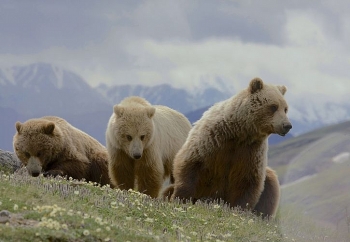 Top 5 Most Attractive Places in Alaska Top 5 Most Attractive Places in Alaska |
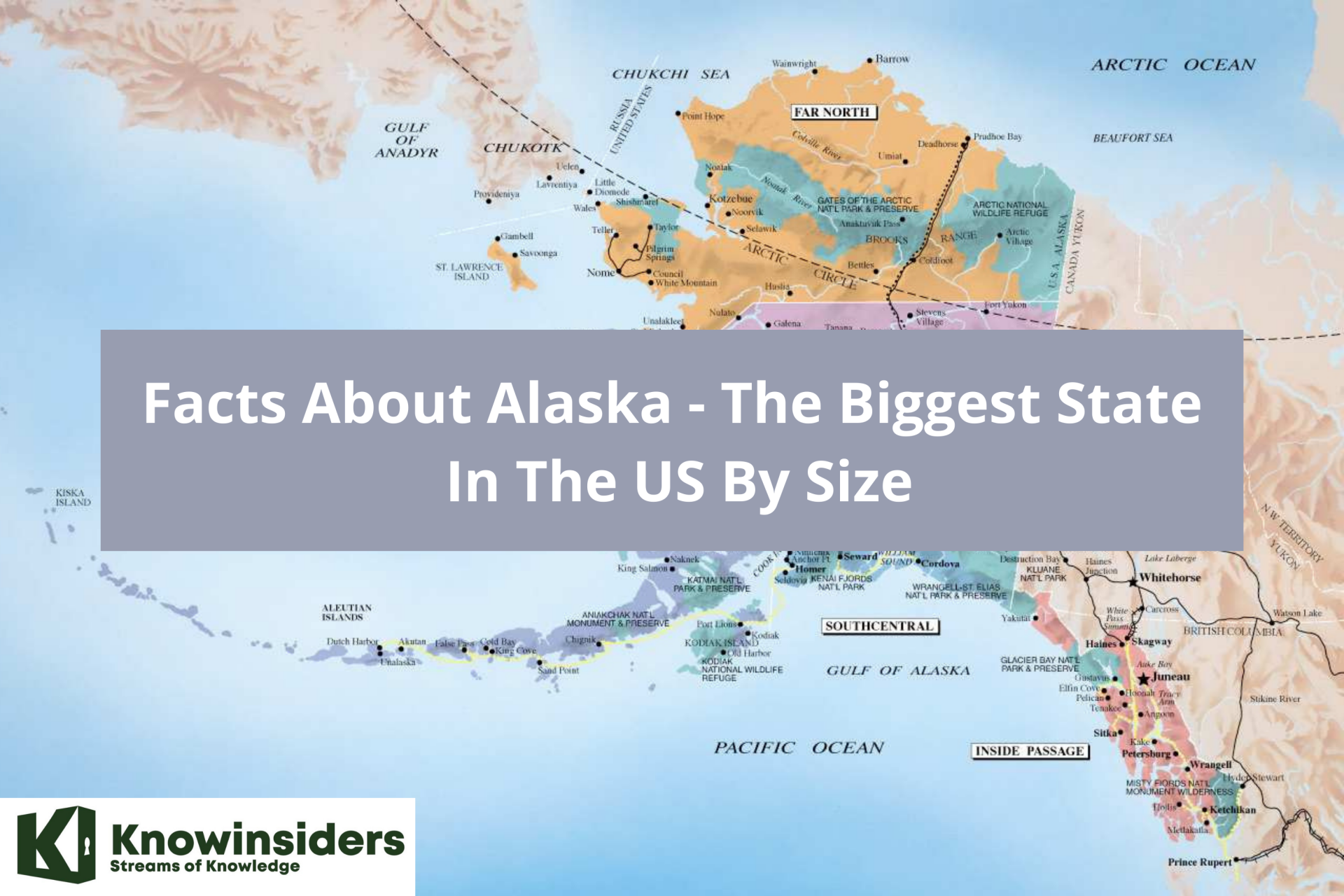 |
| Facts About Alaska - The Biggest State In The US By Land Arrea - Photo: KnowInsiders.com |
| Contents |
What is the Largest State in the US?
After Canada and Russia, the United States is the third-largest country in the world by area. The size of the US's 50 states varies greatly.
Compared to Rhode Island, the smallest state, Alaska, the largest state, is more than 400 times bigger.
Large areas do not necessarily have a large population in the US.
On January 3, 1959, Alaska, a member state of the United States of America, became the 49th state to join the union. Alaska is a lot of fun because it's the biggest state in the US, a natural powerhouse, and the location of 98% of the nation's brown bears. It's not surprising that Alaska is referred to as America's last great frontier given the abundance of wildlife, natural resources, and diverse landscapes there.
With KnowInsider, let's learn fascinating and entertaining facts about the nation's 49th state, its citizens, its landmarks and geographical distinctions, and its most crucial facts.
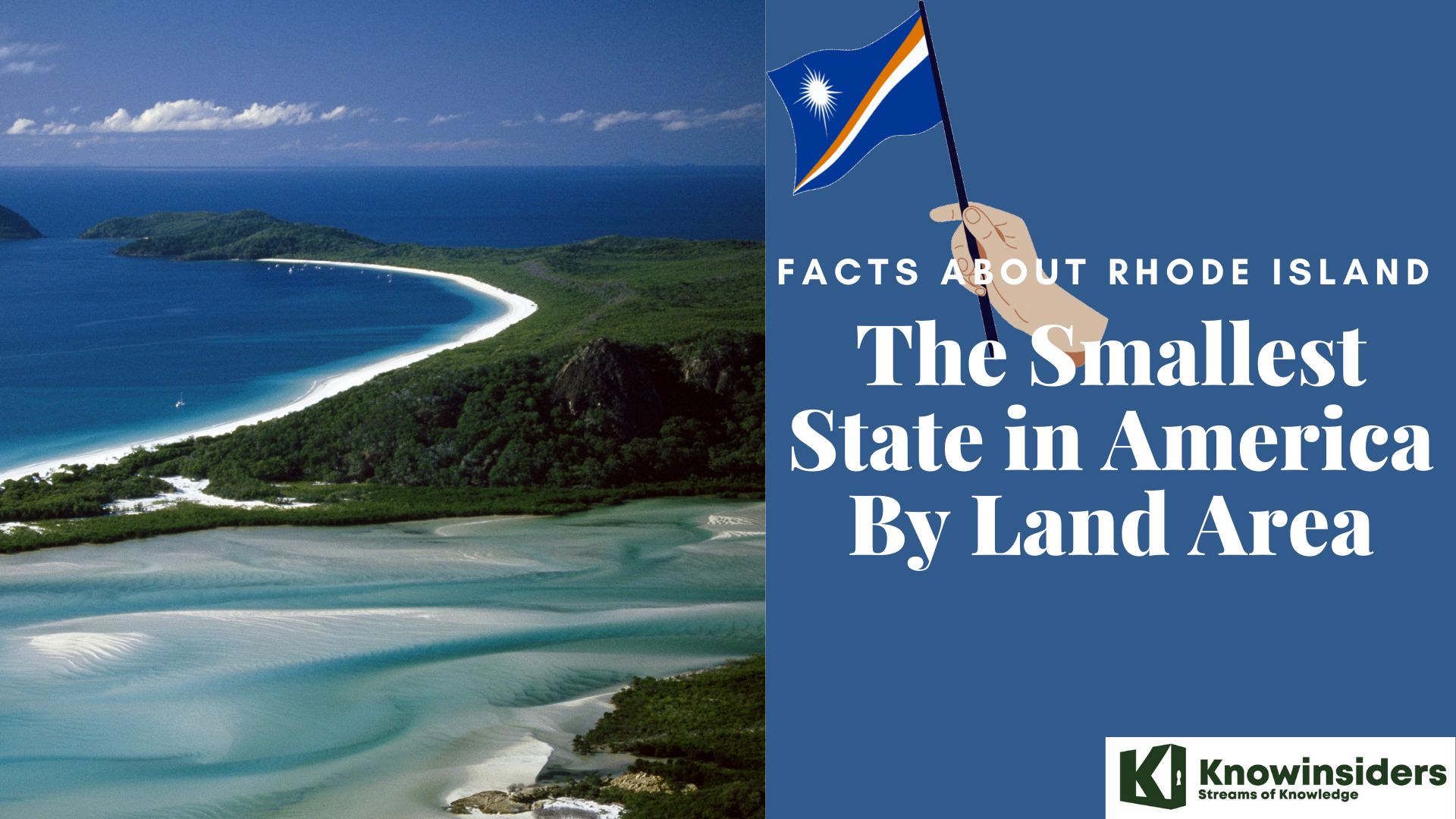 Amazing Facts About Rhode Island - Smallest State by Land Area in the US Amazing Facts About Rhode Island - Smallest State by Land Area in the US |
Where is Alaska on the Map?
 |
| Alaska Location Map |
Canada's northwest is where Alaska is situated. By area, Alaska is the largest state in the union. Alaska is a non-contiguous state located in the far north-west of the North American continent, as can be seen on the state map provided.
Alaska is bordered to the east by the Yukon Territory of Canada and the province of British Columbia, to the north by the Beaufort Sea and the Arctic Ocean, to the west by the Bering Strait and the Bering Sea, to the south by the Gulf of Alaska and the Pacific Ocean, and to the northwest by the Chukchi Sea. It is divided from the Russian Federation on the western side by the Bering Strait.
History and Origin of the Name "Alaska"
Alaska, the 49th state of the USA, was created in 1959; in reality, it was Russian territory that the USA bought in 1867. The majority of Alaska has an arctic climate, which is completely unsuitable for human habitation. This is one of the factors contributing to Alaska's low population density as a US state. The southern coastal metropolitan area of Anchorage is home to roughly half of Alaska's population. The capital of Alaska is Juneau, which is located in the state's southeast.
The highest peak in North America is Mount McKinley, which rises to a height of 6194 meters and is located almost in the middle of Alaska. It is Alaska Mountain Range's highest point. On an Alaska map, it is clear that the state has the longest coastline—longer than the entire length of the United States.
About 13,000 years ago, the region that is now Alaska was likely settled by the first people. They either walked or they sailed from what is now Russia to Alaska, which was connected by a strip of land up to 600 miles wide known as the Bering Land Bridge.
From the late 1700s until 1867, when it was bought by U.S. Secretary of State William Seward for $7.2 million, or about two cents per acre, Russia controlled the majority of the region that is now Alaska. Attu and Kiska, two Alaskan islands, were occupied by the Japanese for 15 months during World War II. Before gold was discovered in 1872, many people believed the harsh environment was a bad investment. In 1959, Alaska became the 49th state in the union.
There are still indigenous people living here, including Inuit, Tlingit, Haida, Aleuts, Athabascans, and Yup'ik.
The word "Alaska" is derived from the Aleut native word "Alyeska," or "Alaxsxaq," which roughly translates to "great land."
Alaska - Size and Population
 |
| Photo: bellsalaska |
Alaska, the largest state in the union, is roughly twice the size of Texas or four times the size of California. The combined areas of Germany, Austria, Switzerland, Italy, and France are about the same size as Alaska!
The capital of Alaska is Juneau. Only air or water can be used to travel to the state capital. Despite being on the mainland of Alaska, Juneau has a rough terrain, and there are no roads connecting it to any other cities.
The eastern border of the city borders Canada, making Juneau the only US capital to be located at a border.
Alaska is surrounded by the Pacific and Arctic oceans. With 55,000 km (34,000 miles), Alaska actually has the longest coastline of any US state.
With a length of 2,475 kilometers (1,538 miles), Alaska has the longest land border with Canada of any US state.
The population of Alaska is roughly 700,000. In Alaska, the southern and central regions are home to the majority of the population.
With about 250,000 people, Anchorage is the city with the highest population in Alaska.
The two largest US cities by land area are both in Alaska; Juneau is the second-largest US city by land area, behind Sitka, which is also in Alaska. There are only 9,000 people living in Sitka.
Quick FactsDate of Statehood: January 3, 1959 Capital: Juneau Population: 710,231 (2010) Size: 664,988 square miles Nickname(s): The Last Frontier; Land of the Midnight Sun Motto: North to the Future Tree: Sitka Spruce Flower: Forget-me-not Bird: Willow Ptarmigan |
Alaska: Nature and Landscapes
 |
| Photo: tourradar |
Mountains: Of the 20 highest peaks in the United States, 17 are in Alaska. Denali, the highest peak in North America, is 20,320 ft. above sea level. Denali, the Indian name for the peak, means "The Great One."
Water Bodies: The Yukon River, almost 2,000 miles long, is the third-longest river in the U.S. There are more than 3,000 rivers in Alaska and over 3 million lakes. The largest, Lake Iliamna, encompasses over 1,000 square miles.
Glaciers: Alaska has an estimated 100,000 glaciers, ranging from tiny cirque glaciers to huge valley glaciers. There are more active glaciers and ice fields in Alaska than in the rest of the inhabited world. The largest glacier is the Malaspina at 850 square miles. Five percent of the state, or 29,000 square miles, is covered by glaciers.
Compass Points: Alaska boasts the northernmost (Point Barrow), the easternmost (Pochnoi Point on Semisopochnoi Island in the Aleutians), and the westernmost (Amatignak Island in the Aleutians) points in the United States."
Coastline: Alaska has 6,640 miles of coastline and, including islands, has 33,904 miles of shoreline.
Volcanoes: There are more than 70 potentially active volcanoes in Alaska. Several have erupted in recent times. The most violent volcanic eruption of the century took place in 1912 when Novarupta Volcano erupted, creating the Valley of Ten Thousand clouds of smoke which is now part of Katmai National Park.
Earthquakes: On March 27, 1964, North America's strongest recorded earthquake, with a moment magnitude of 9.2, rocked central Alaska. Each year Alaska has approximately 5,000 earthquakes, including 1,000 that measure above 3.5 on the Richter scale. Of the ten strongest earthquakes ever recorded in the world, three have occurred in Alaska.
Weather in Alaska
Visitors who went on vacation or for pleasure found the weather to be better than they had anticipated. The state experiences a wide range of average daytime temperatures during the summer, from the 60s to the 90s.
Fairbanks experiences an average high temperature of 1 degrees and an average low temperature of 17 degrees below zero in the month of January. Don't worry about the cold; if you dress in layers, you'll be comfortable for a few hours of searching for the northern lights.
In Fort Yukon in 1915, a temperature of 100 degrees was the highest ever recorded in Alaska. Plan your trip to the interior of Alaska during the summer to take advantage of warmer weather if you don't like the chilly January temperatures in Fairbanks.
At Prospect Creek Camp in 1971, the state of Alaska experienced its coldest temperature ever. Not surprisingly, this is also the coldest temperature ever recorded in the United States.
For two and a half months, the sun doesn’t set at all in Alaska
Alaska is the state that never sleeps—at least not during the summer. New York may be known as the city that never sleeps.
Known as the "Midnight Sun," this well-known phenomenon sees parts of Alaska experience 24 hours of sunlight on average from late April to August.
For example, Barrow, the most remote community in the state, has 2.5 months during which the sun never sets.
Alaska: Wildlife and Natural Resources
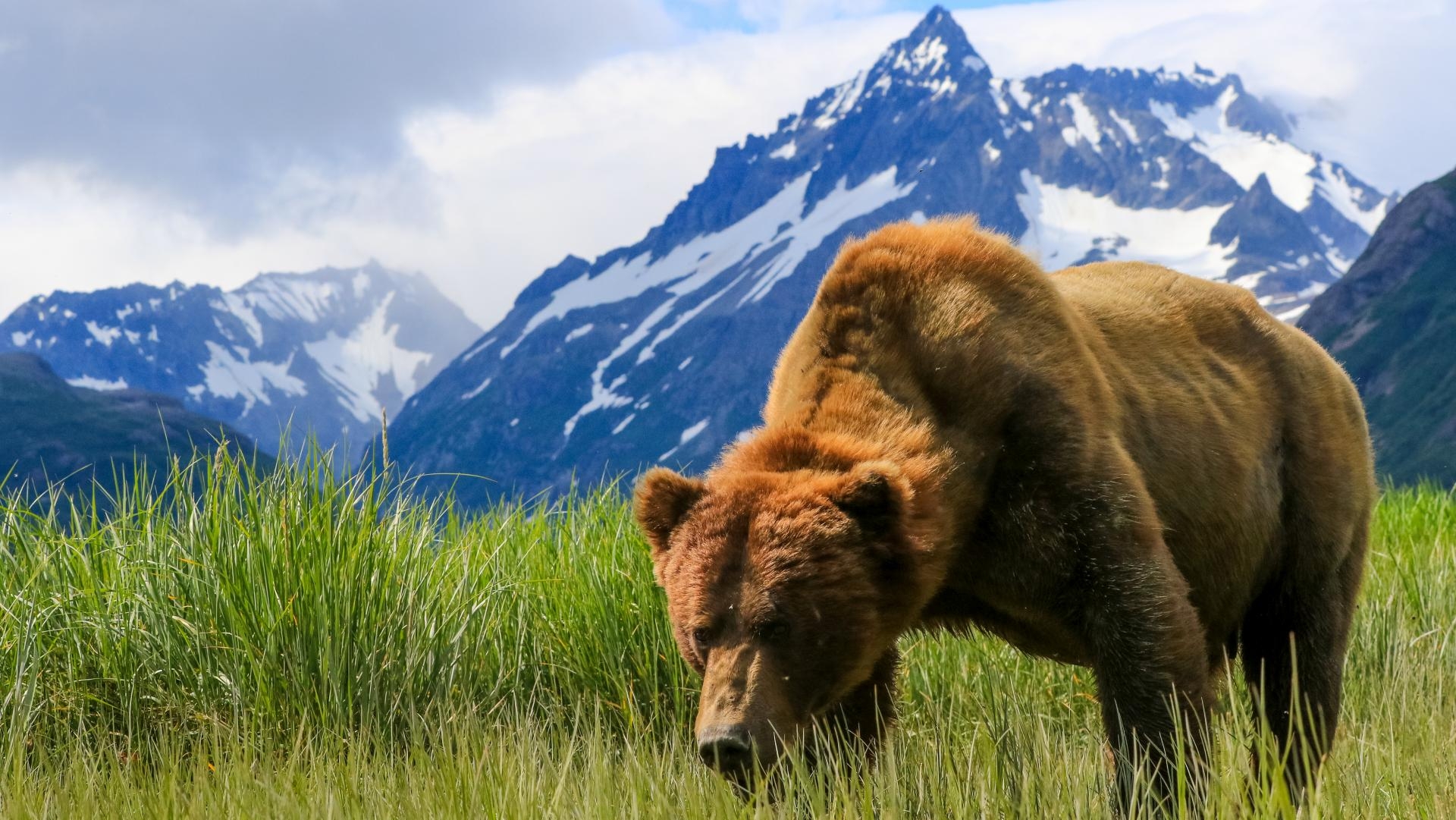 |
| Photo: frontier-canada |
Polar bears, beluga whales, and walruses might be seen off Alaska's north and west coasts. Black bears, moose, Dall sheep, musk oxen, caribou, and the Kodiak brown bear, the largest brown bear in the world, are other large mammals. Birds like loons, eagles, and albatross can be found in Alaska.
According to the Alaska Department of Fish and Game, between 250 and 350 American black bears and 55 to 65 grizzly bears are thought to coexist with humans in Anchorage.
Although there are many wild areas for bears to hang out in Anchorage, they occasionally mix with humans. Most recently (and famously), a woman was surprised by a man biting her on the butt after sneaking into an outhouse.
As well as Sitka spruce, the state tree of Alaska, you can see hemlock, pine, cedar, and other trees. The forget-me-not, which only releases its scent at night, is the state flower.
Zinc is Alaska's main mineral export, but gold is the state's most well-known export. Lumber, fish, particularly salmon, coal, and jade, the state gem, are other Alaskan exports.
Alaska: Industry and Economy
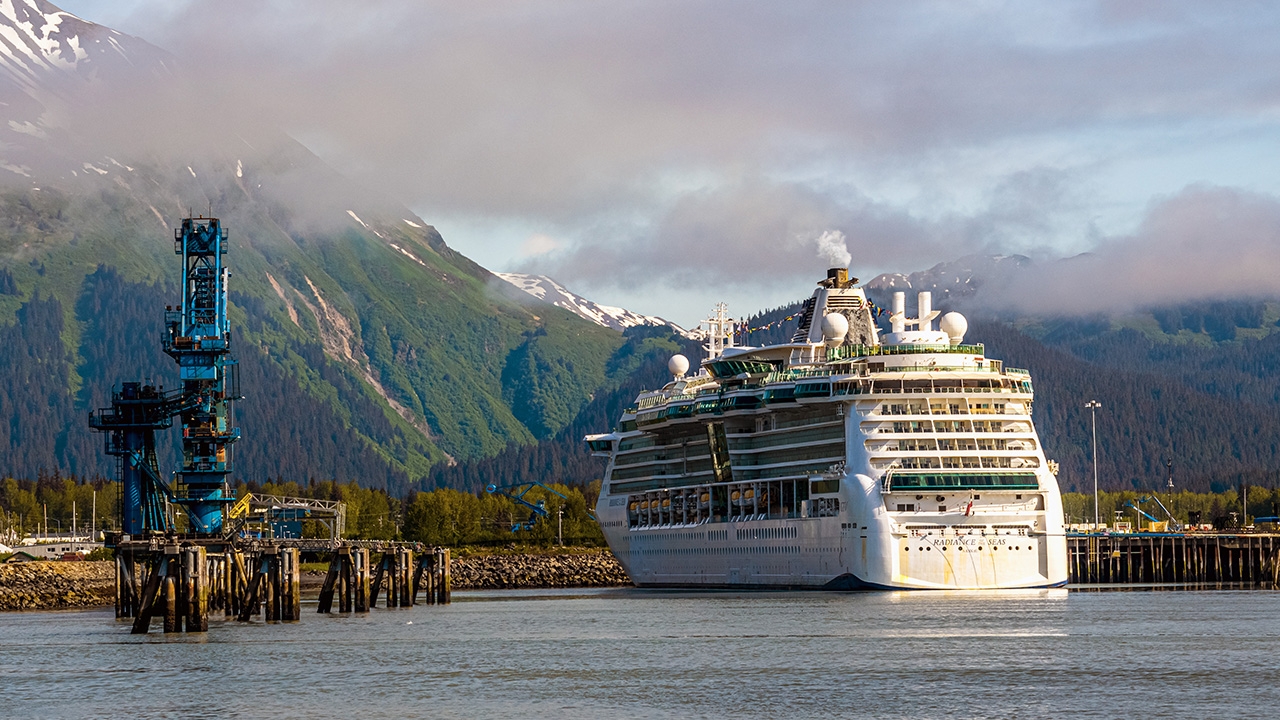 |
| Photo: foxbusiness |
Alaska is the only state that does not impose a state income tax or a sales tax (although some localities do).
According to the Alaska Seafood Marketing Institute, more than 21,200 people, or 15% of all rural workers of working age, were directly employed by the industry in many rural communities.
More than 60% of American commercial fisheries are produced in Alaska. In Alaska, people can catch five different species of salmon, four different species of crab, cod, shrimp, halibut, and more.
The largest oil field in North America is located in Prudhoe Bay on the northern coast of Alaska.
The trans-Alaska pipeline travels more than 800 miles from Prudhoe Bay to Valdez over difficult terrain, including three mountain ranges. The pipeline has carried over 18 billion barrels. 77,000 people were employed on the pipeline project from 1969 until it was finished in 1977.
Alaska had 10,378 active pilots as of July 2015. The state's certification rate, which is greater than 1% of the total population, is 3.6 times higher than the national average. Additionally, the state has four times as many airports per square mile. This is explained by the fact that so much of Alaska can only be reached by air or water.
The largest and busiest seaplane base in the world is located in Anchorage at Lake Hood.
Although gold may be what makes Alaska the most well-known state, zinc is the state's largest mineral export.
Alaska: Foods
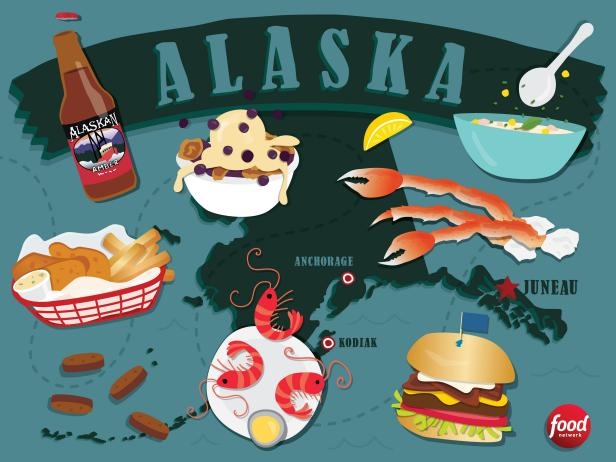 |
| Photo: foodnetwork |
Outstanding cuisine is abundant in Alaska. Restaurants proudly serve the best of the treats from the Last Frontier, whether meals include freshly caught king crab or locally grown vegetables. Locals still prepare a lot of traditional Alaskan dishes, such as akutaq (Eskimo ice cream) and game meat (think moose, caribou, and deer), even though most restaurants don't serve them.
Seafood
Few foods have a stronger bond with Alaska than seafood. It's understandable why people are interested in the fresh salmon, flaky halibut, and enormous king crab. This is as fresh as it gets, whether it's steamed, seared, or served as sushi. Along with scallops seared to perfection, Kachemak Bay oysters served with champagne, razor clams in hearty chowders, and cod, pollock, and rockfish plucked from the depths are also available.
Birch
Each spring, trees are tapped to produce a limited amount of birch syrup. Birch syrup adds a smoky, caramel flavor and is often poured over French toast. It can also be made into candies and used in marinades and glazes. One gallon of syrup requires 110 gallons of sap, and only 5,000 gallons are produced worldwide each year, with Alaska producing a sizable portion.
Reindeer sausage
These mildly spicy links are Anchorage's most well-known street food, and you can find vendors selling them from tiny carts on sidewalks, at events like fairs and festivals, and at food truck gatherings. There are countless possible combinations because each vendor brings their own sauces and sides, but you're missing out if you don't include sautéed onions because their secret ingredient is cola.
Vegetables
Sweet carrots, crisp potatoes, and lots of leafy greens are produced by the midnight sun and rich glacial soils, in addition to broccolini, rhubarb, radishes, and Romanesco. The freshest produce from the harvest is offered at farmer's markets in the Anchorage area. Farming and foraging are equally important. Spruce tip salts, fireweed honey, and other foods made from naturally growing plants can be discovered in local markets.
Sourdough
Alaskans who have lived there for a long time are known as "sourdoughs" because sourdough starter is such a common food there. Sourdough was a favorite because other yeasts were hard to ship and maintain in Alaska a century or more ago. Unlike other sourdough strains, Alaska sourdough typically lacks the more astringent sour flavor. More bread can be made with sourdough. In the morning, look for it as wide, thin sourdough pancakes.
Alaska Official Sport: Dog Mushing
 |
| Photo: explorefairbanks |
In 1972, dog sledding was made the official state sport of Alaska.
Dogs have been used to pull sleds for centuries, and in many areas of Alaska they once served as the main mode of transportation (the Alaskan malamute was named the official state dog in 2010). Sled dog racing originated from this tradition. It is now a popular sport all over the world for both amateur and professional competition. The Iditarod, dubbed "The Last Great Race," is an annual event in Alaska that attracts participants from all over the world.
Alaska Fun Stuff- The temperature in northern Alaska dropped to -80ºF in 1971, marking the coldest temperature ever recorded in the United States. - Alaska is called the Land of the Midnight Sun because for over two months in the summer, in the northernmost part of the state, the sun doesn’t set at all! - The aurora borealis, also known as the Northern Lights, are bands of brightly colored light that dance across the night sky. They’re caused by electrically charged particles from the sun that collide with gases in our atmosphere. - Try a bite of aqutak, or Eskimo ice cream—a mix of seal oil, animal fat, snow, and wild Alaskan berries. |
Top 4 Best Destinations In Alaska
1.Denali National Park
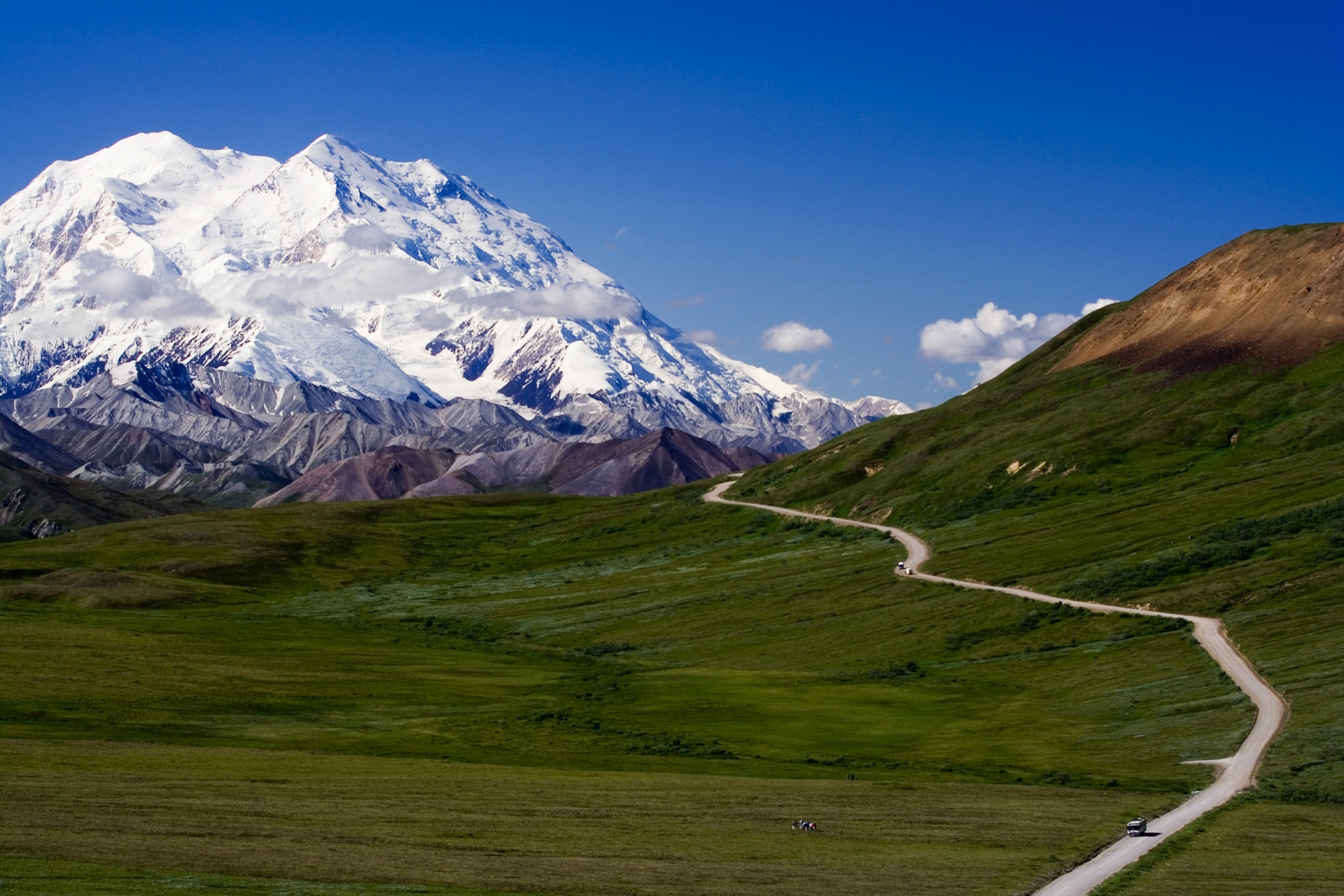 |
| Photo:wikipedia |
Denali, the third-largest national park in the country, is located in the northern portion of the Alaska Range and contains the tallest mountain in the continent. The 20,320-foot peak's traditional name is Denali, but Mount McKinley is what modern explorers called it. After a name dispute that lasted more than a century, North America's highest peak officially adopted the name "Denali" in 2015.
The six million acres of expansive river valleys, tundra, high alpine ranges, and glacier-covered mountains are breathtaking regardless of their names. Only buses that have been approved by the park are allowed to go past Savage River, and there is only one road that enters the park. Weather permitting, views of Denali can be seen from the park road.
Grizzly bears, wolves, reindeer, elk, and other animals live in Denali, which is halfway between Anchorage and Fairbanks. In the park, birds of more than 167 different species have been spotted. The Sled Dog Kennels, which host dozens of animated huskies and provide demonstrations, are another favorite among the park's numerous activities.
Address: Milepost 240, George Parks Hwy, Denali National Park, Alaska
2.Tracy Arm Fjord
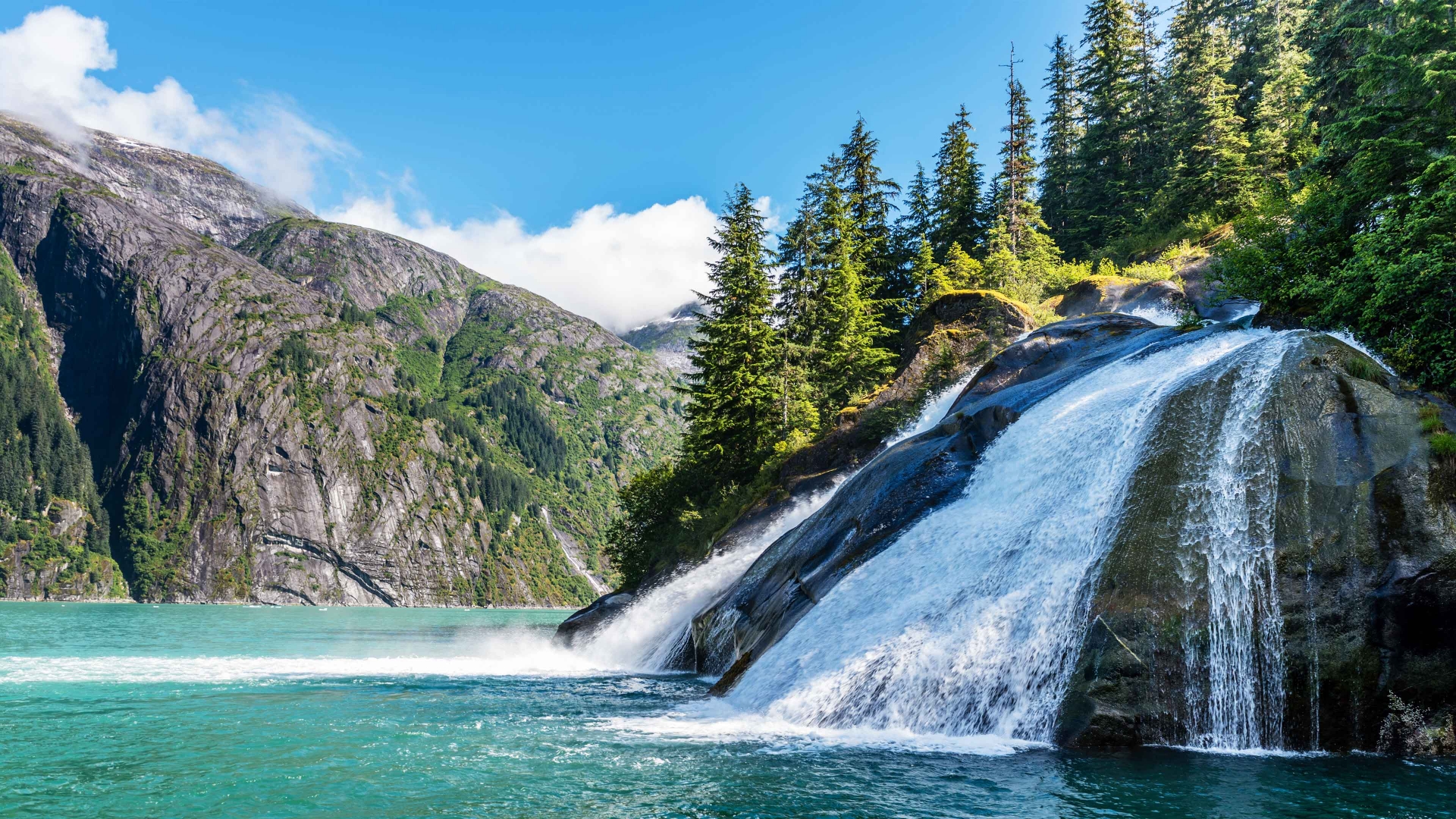 |
| Photo: celebritycruises |
Tracy Arm, a fjord bordered by glaciers and south of Juneau, is a well-liked stop for cruise ships and boat tours. Waterfalls cascade down the jagged rock faces, while glaciers calve to form tiny icebergs.
The Tracy Arm-Fords Terror Wilderness of the Tongass National Forest contains the picturesque setting. The twin Sawyer Glaciers are located at the head of the fjord. Whether it's a brown bear or moose on land, or the whales and seals that live in these waters, wildlife sightings are frequent on tours.
Only a small portion of Alaska's glacier viewing is available in Tracy Arm. Glacier Bay National Park, located northwest of Juneau, and Prince William Sound, located close to Anchorage, are two additional tourist hotspots. Numerous tour operators in Juneau, such as Adventure Bound Alaska, provide inexpensive day trips with unrestricted views of the natural beauty.
3.Kenai Fjords National Park
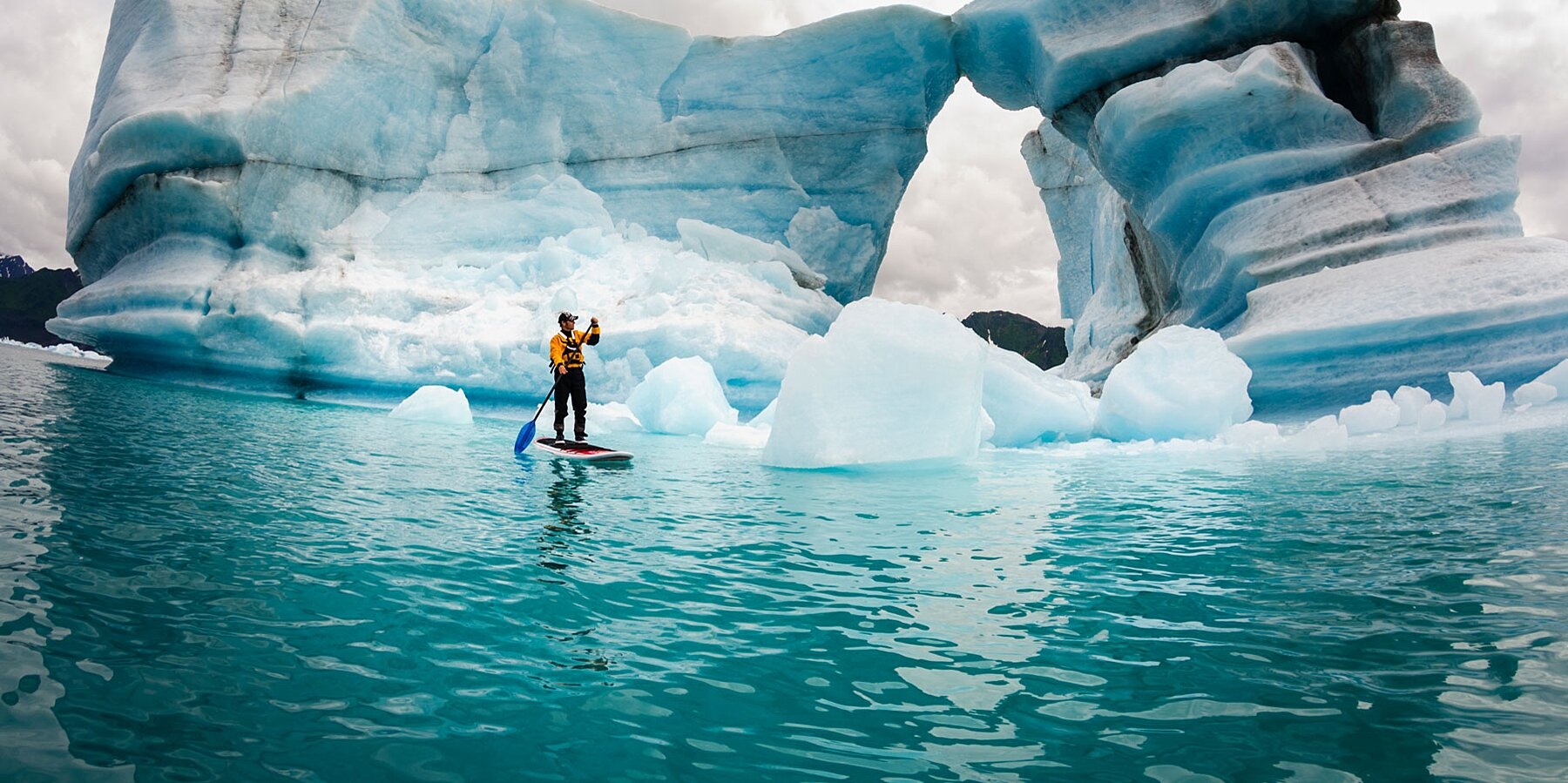 |
| Photo: travelandleisure |
The Kenai Fjords National Park is like a time machine that transports you to the ice age. There are still glaciers and ice caps that reach out to the ocean's edge, providing dramatic and unforgettable views.
Deep fjords have developed where the water valleys formed, and half of the park is permanently covered in ice. Many aquatic animals call these fjords home, and you can easily see migratory whales as well as birds swooping down to feed on the fish in the water.
Although there are few places to stay in the park itself due to the icy conditions, many visitors opt to take a guided day tour instead of spending the night there.
4.Mendenhall Glacier
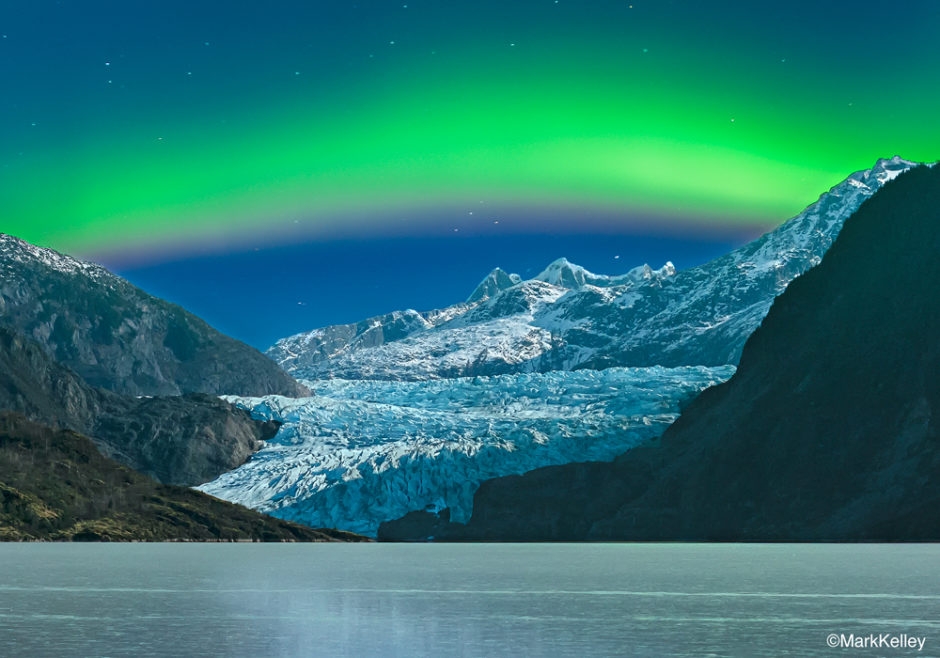 |
| Photo; markkelley |
The massive Mendenhall Glacier, which is calving, or separating, into its own nearby lake, is only a short drive from Juneau. The glacier can be viewed in a variety of ways, from a straightforward shuttle ride to get a close-up view to a helicopter ride to fully appreciate the glacier's immense size.
The Mendenhall Glacier West Glacier Trail, which is extremely difficult but offers incredible opportunities for photography, may be tried by the fittest visitors. The Mendenhall Glacier Visitor Center, which has displays about the glacier and several viewing platforms, is also worthwhile.
Easy Ways To Visit AlaskaRenting a CarCar rentals are easiest in Anchorage; all the major rental agencies have offices in Anchorage, often in multiple locations. Rent here, and you’ll have the best selection. The best road trips in Alaska start in Anchorage. Tour CompaniesNo problem if you'd prefer to let someone else handle transportation. There are more small aircraft and pilots in Anchorage than anywhere else in the state, and it serves as the hub of rail and road transportation in Alaska. The largest depot for the Alaska Railroad is in Anchorage, and throughout the summer, trains leave the city every day for destinations such as Spencer Glacier Whistle Stop, Kenai Fjords National Park, and Denali. Going it alone does not constitute independent travel. In Anchorage, many tour operators begin day trips and multi-day excursions. Visit a wildlife sanctuary, go on a hike with a guide, see glaciers, and let a professional guide handle the driving. For access to fantastic locations away from the road system, you can also use flightseeing services. With a flight from Anchorage, you can go bear watching in the wild at its best, go day fishing in a remote area, or even go to Denali. |
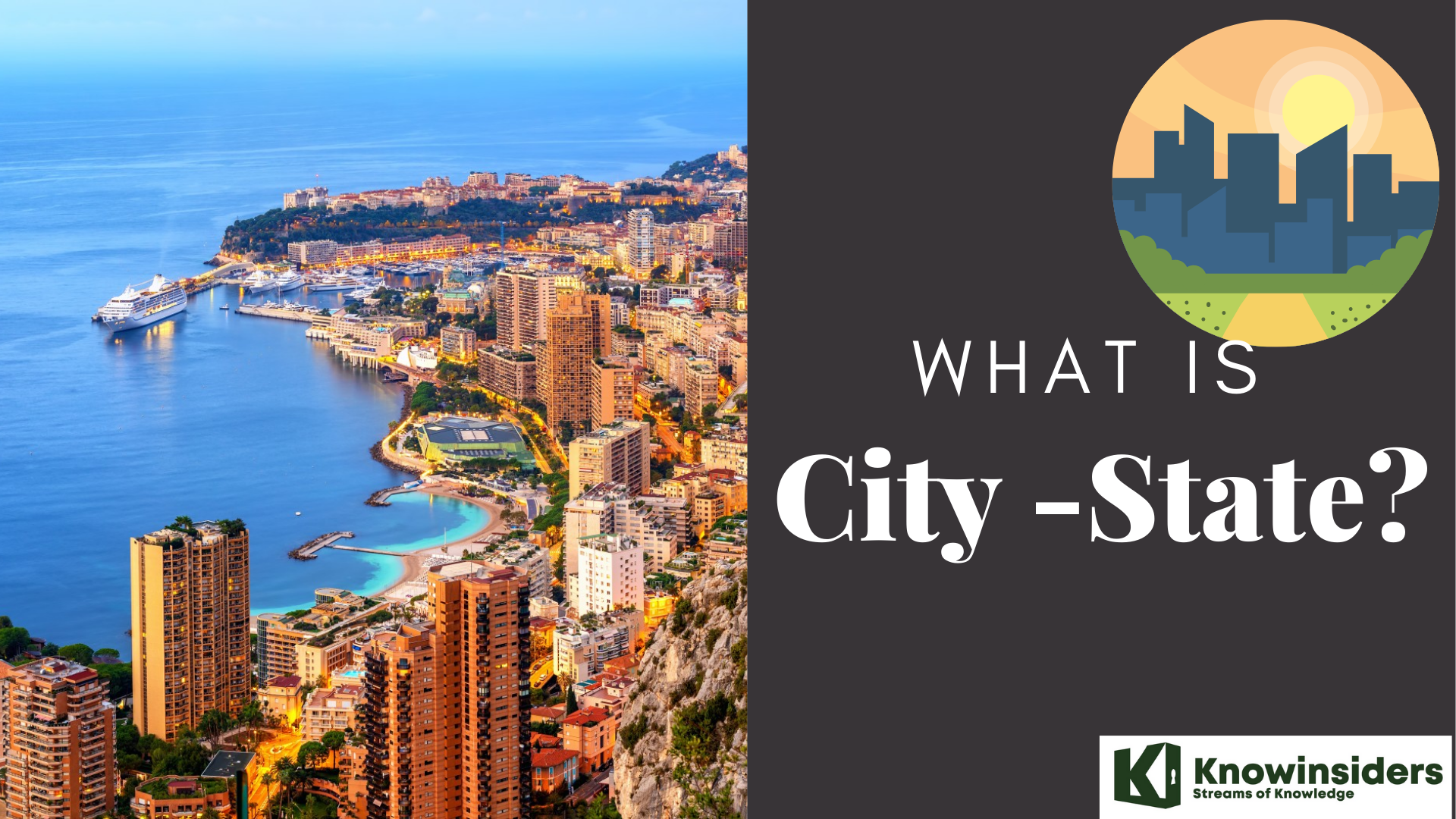 What Are City States And Facts About Vatican, Monaco, Singapore What Are City States And Facts About Vatican, Monaco, Singapore What is "City-State" term? We will guide you through the definition, characteristics, history, and examples. |
 The Interesting Facts About Squid Game’s Alarm Clock The Interesting Facts About Squid Game’s Alarm Clock A lot of items belonged to Squid Game have gone viral after it became the first South Korean series to top the US Netflix chart. ... |
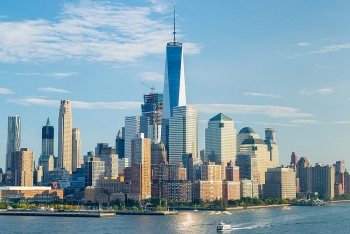 Facts About 'One World Trade Center' - The Tallest Building in America Facts About 'One World Trade Center' - The Tallest Building in America Many of America's tallest skyscrapers have been built in the past five years — such as the Wilshire-Grand Center in Los Angeles or Chase Tower ... |

